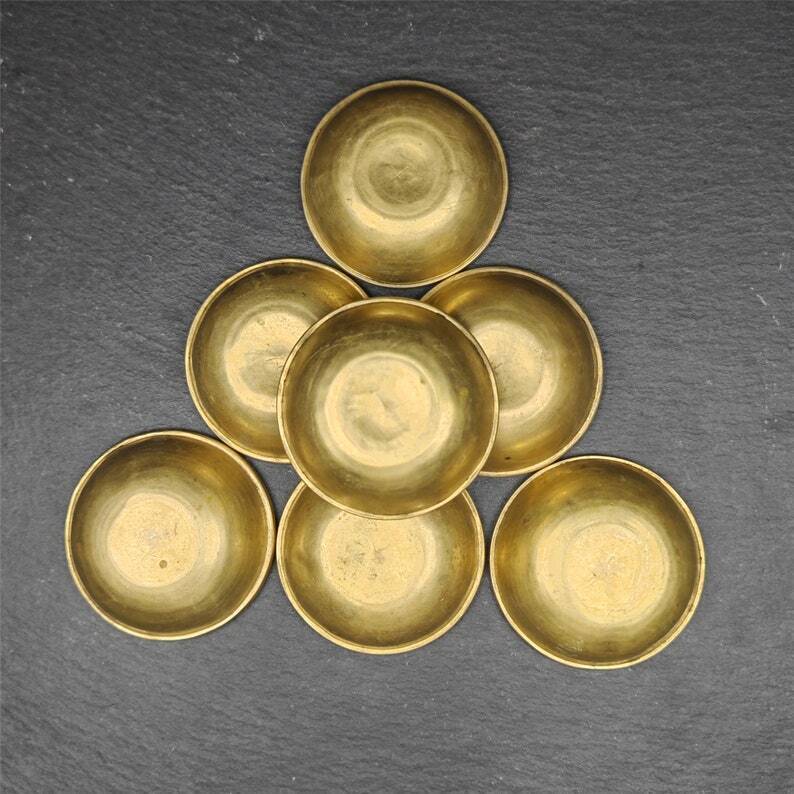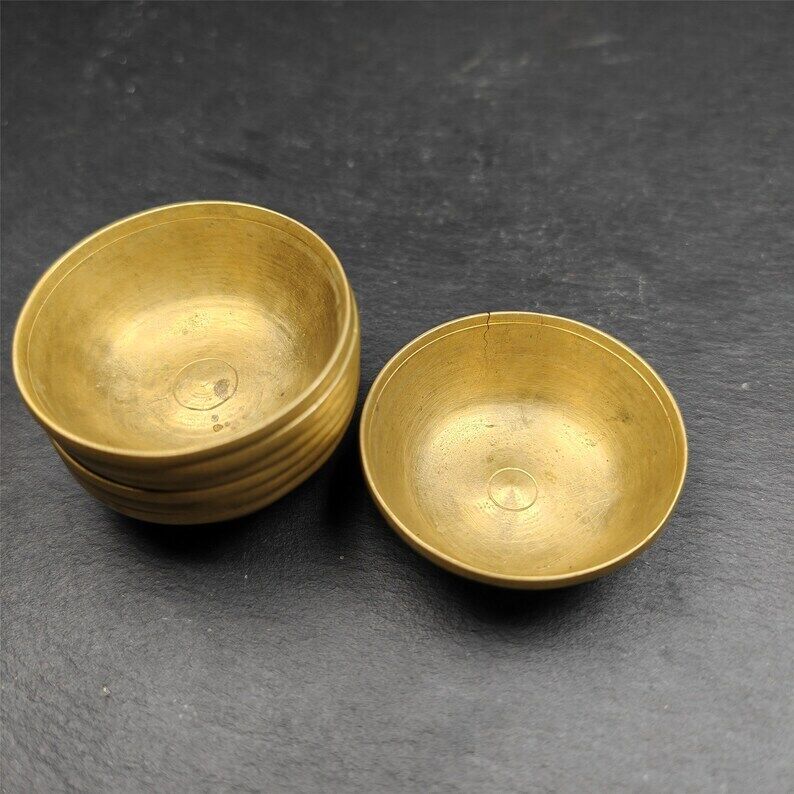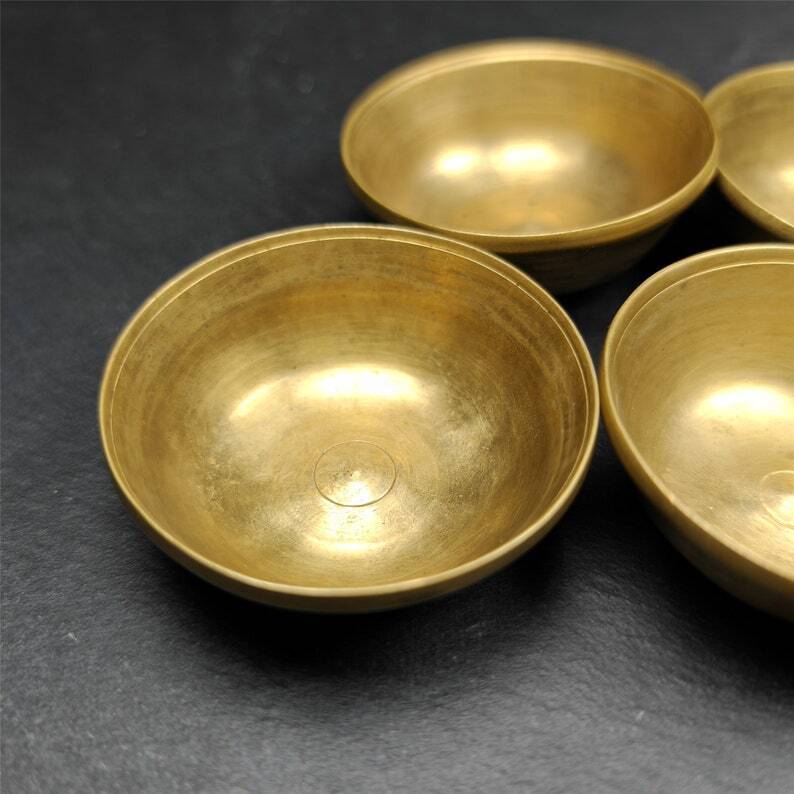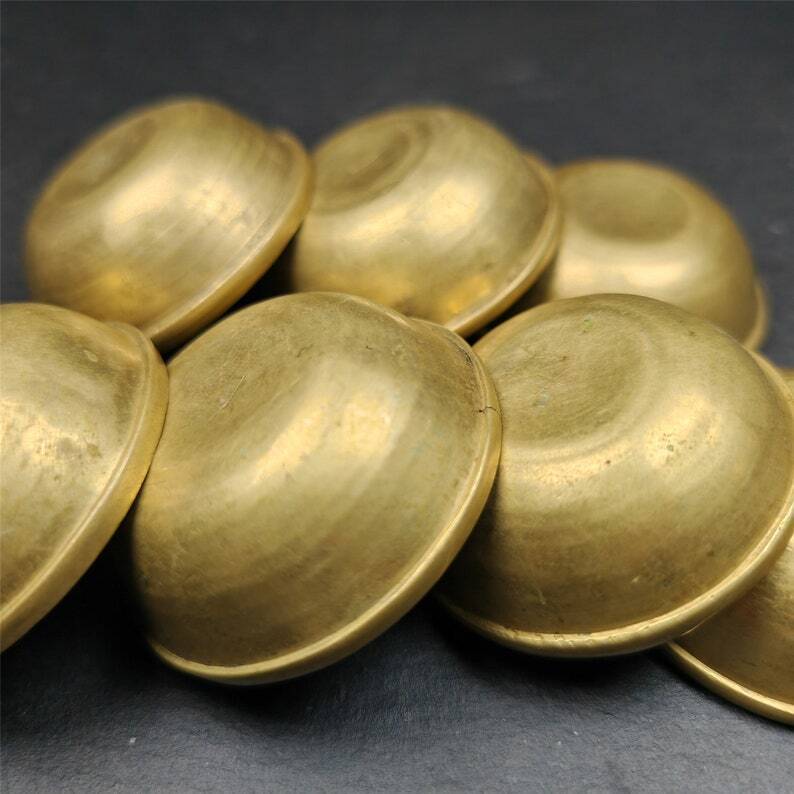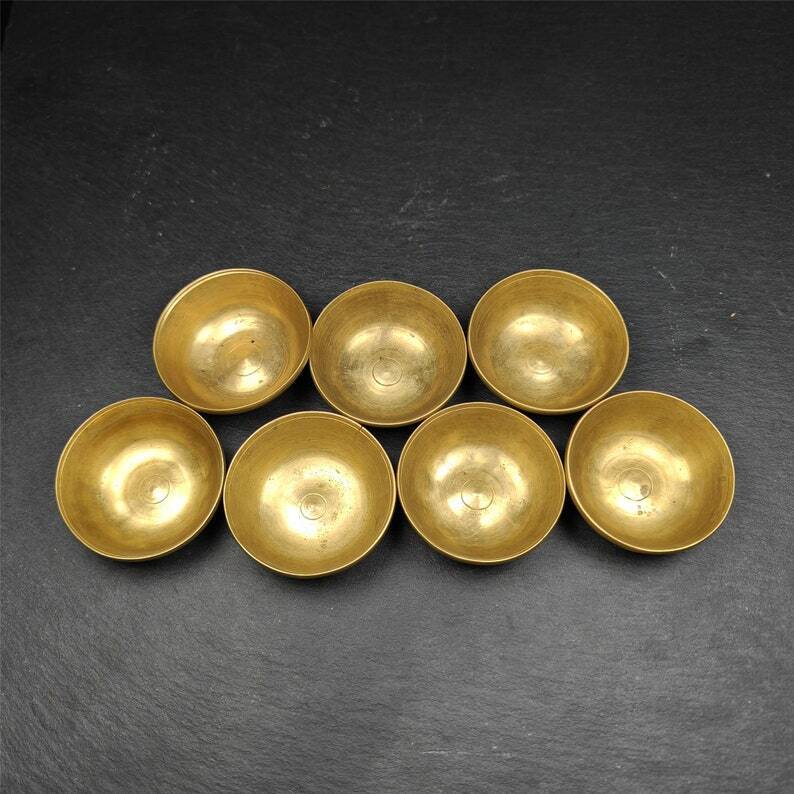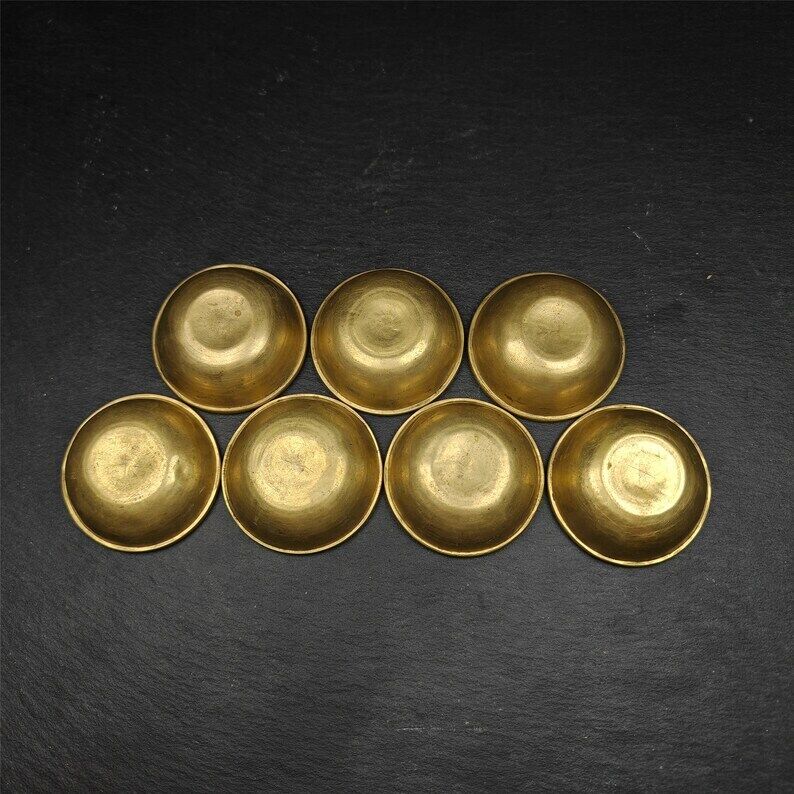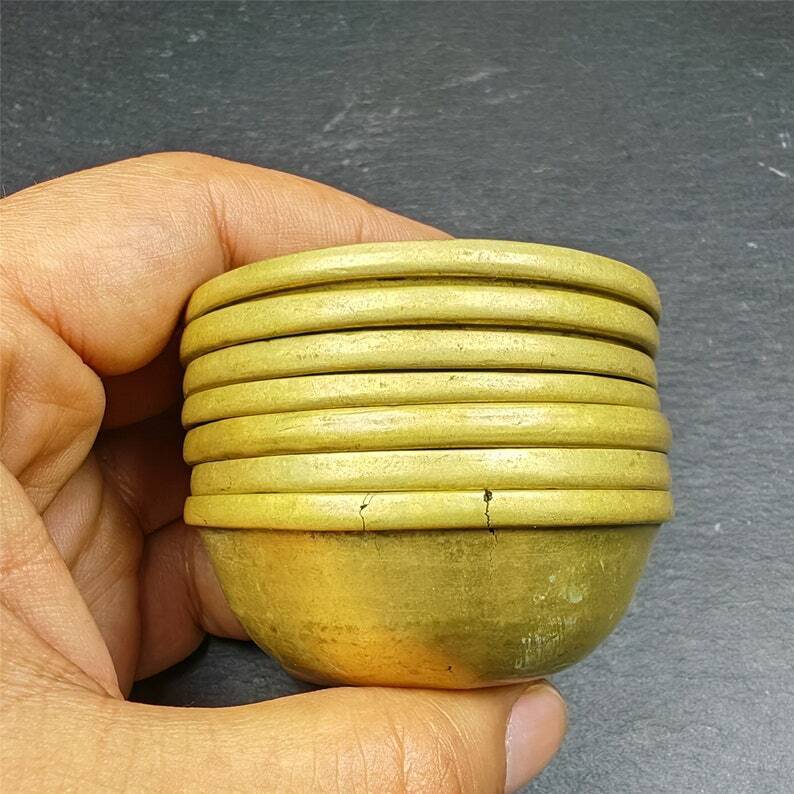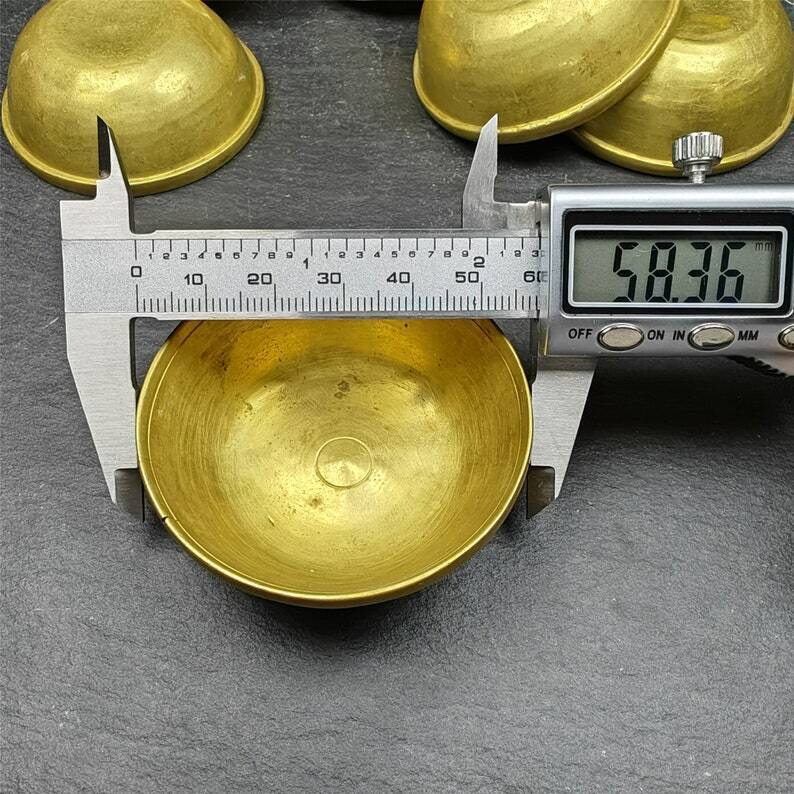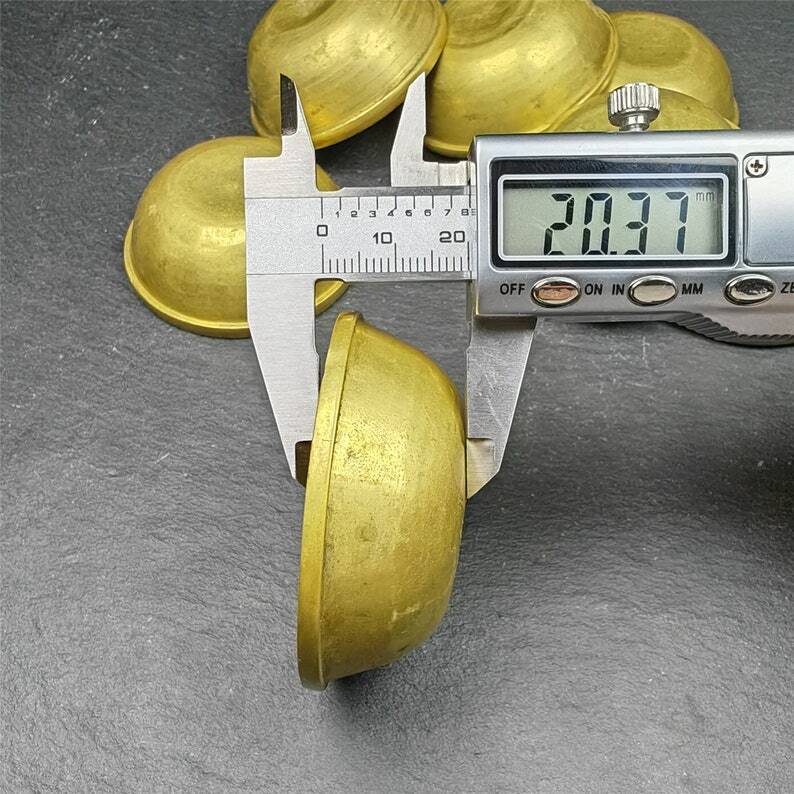Water Offering Bowls,1 Set of 7 Yonchap Bowls,from Kathok
Water Offering Bowls,1 Set of 7 Yonchap Bowls,from Kathok
Couldn't load pickup availability
❤ONLY ONE,UNIQUE.
This set of tibetan water offering bowls were collected from Gerze,Tibet,offerings at Kathok Monastery,about 40 Years Old,full of energy.
Please note: Because it is an old item, one of the bowls has a crack (but it does not affect its use), we have not repaired it and have kept it in its original state.
❤DETAILS
100% Handmade
Pendant material:brass
Quantity: 1 set of 7 offering bowls
Height: 20mm / 0.8 inches
Top diameter:58mm / 2.3 inches
❤ABOUT Offering Bowls (Quoted from: yowangdu.com)
The most common type of offering on Tibetan Buddhist shrines are made with seven water offering bowls — called “yonchap” in Tibetan.
Placing a set of offering bowls on your altar each day is a way of accumulating virtue and merit and is also an effective means of cultivating generosity. The bowls symbolise the traditional offerings of drinking and washing water, flowers, incense, light, perfume, food, and music.
❤Why Offer Water?
As we discussed in a post on setting up a Losar shrine the main point of any offering is a pure motivation to cultivate generosity, and to reduce our selfishness, stinginess and greed.
We seek to give with an open, pure heart, with no attachment to what we are giving, and with no motivation of receiving something in return.
Paradoxically, as His Holiness the Dalai Lama often teaches, cultivating generosity and devoting ourselves to the welfare of others increases our own happiness in many ways, as we release the painful, stiff worry that accompanies greed and self-centeredness.
He encourages us to become selfishly altruistic, to become happy people by concerning ourselves primarily with the well being of others.
One reason that we offer water is that water in Tibet has traditionally been considered plentiful and free, and therefore painless to give. The idea is that all of our offerings should be given as freely as we would give water.
Another way to view the water offerings is as representing the seven aspects of prayer:
prostrating
offerings to the Buddhas
confessing our wrongs
rejoicing in the good qualities of oneself and others
requesting the Buddhas to remain in this world
beseeching the Buddhas to teach others
dedicating the merit of ourselves and others which has been accumulated throughout time, in order that all sentient beings may enjoy happiness and virtue
❤How Should I Set Up the Water Offering Bowls?
Traditionally in Tibetan homes, we make our yonchap every morning. If that is not possible, we do it as often as we can.
Start with seven clean bowls — called ting in Tibetan — and a pitcher of fresh water. Tibetans usually use silver, brass or copper bowls, which range from very plain to carved and intricately decorated treasures.
One by one, pour a little water in each bowl before you place it on the shrine, lining the bowls up from left to right as you face the shrine. The reason to start with a little water in each bowl is that it is inauspicious to have a bowl sitting empty on the shrine.
Tibetan Buddhist masters explain that each bowl should be the distance of one barley seed from the next one.
Starting from left to right, fill each bowl with water, almost to the top. Again, the common thought is that you leave the space of one barley seed from the rim of the bowl.
While setting up your offering bowls, it is common for Tibetans to recite one of the more common mantras, like:
— Om mani padme hung (Avalokiteshvara’s mantra)
— Om muni muni maha munaye soha (Buddha Shakyamuni’s mantra)
— Om tare tuttare ture soha (Tara’s mantra)
Others may recite what is called the gyamdro prayer. The prayer can be whatever you choose. What is most important is that you pray with a sincere wish to cultivate generosity and an open heart.
In the same spirit, you might visualize that you are offering endless quantities of everything beautiful and precious, plus all the good qualities in our hearts and minds, to a vast assembly of Buddhas.
You can put a butter lamp between the third and fourth bowls, or between the fourth and fifth bowls, symbolizing the light of wisdom, dispelling the darkness of ignorance.
Once the bowls are filled, it is common to bless the offerings with kusha grass (also called elephant grass) or any kind of clean straw or stick that you may have access to. To do this, you dip your grasses into one of the bowls and sprinkle the shrine with water, reciting the purifying mantra “om a hum.” (From Khandro.net)
Finally, you can dedicate the merit you have gained by the offerings to the elimination of suffering and its causes for all sentient beings.
❤ABOUT GANDHANRA
Gandhanra is a dedicated collective of artisans hailing from Hepo Township, Baiyu County in Tibet.
With a profound commitment to preserving ancient Tibetan handicraft techniques, we specialize in creating exceptional Tibetan Buddhist instruments and crafts.
By choosing our meticulously crafts, you're not just acquiring a ritual for your practice, but also directly contributing to the livelihoods of our artisans and their families in Tibet.
Your support is invaluable and deeply appreciated.
❤Packaging &Shipping
As per our Product nature, we do the packaging. For every single product, we do the bubble wrapping along with the paper carton boxes is also used for more safety. In the case of heavy products, we also use wooden boxes too for more safe packaging and sent for the shipping process.
❤Feedback
Our goal is to make sure my customer is happy and satisfied when you shopping with us. Please contact or email before leaving negative feedback.
We will try out best to solve our issues. Please give us the chance to resolve any problem.
❤Notice
1.Please allow 1-2mm error due to manual measurement.
2.The color may have different as the difference display.
3.Please make sure you do not mind before you bid.
THANK YOU FOR purchasing our product.

